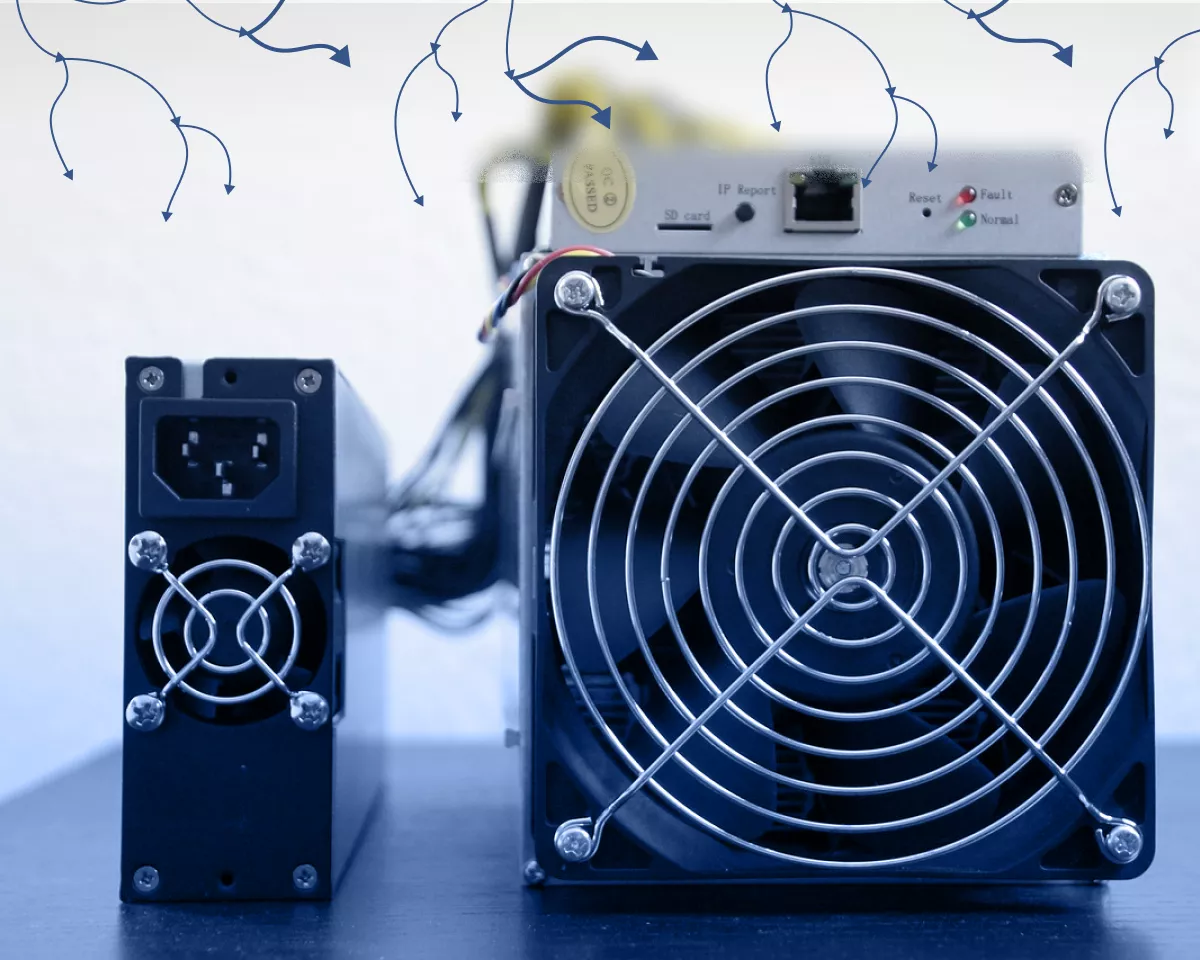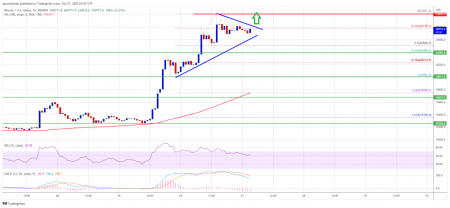Week in review: Bitcoin drops to $95,000 as a spot XRP ETF lists
16.11.2025
News / Economy / Analytics
Digital gold plunged to $95,000; a spot XRP ETF debuted on Nasdaq; Kyrgyzstan shut down mining farms; and other events of the week.
On 11 November bitcoin began to show weakness—its price slipped from $107,000 to $102,000. On 12 November, after rebounding to $105,000, the asset suffered another correction to $101,000 but failed to reclaim the psychological mark.
Even the¬Ýend of America‚Äôs longest-ever 43-day shutdown did not bolster the coin. On Thursday, 13 October, the asset¬Ýbreached the key $100,000 level and headed for $95,000.
The loss of six-figure quotes spooked investors, prompting talk of the bull cycle‚Äôs demise. Yet CryptoQuant CEO Ki Young Ju¬Ýnoted the bear trend is still unconfirmed. He pointed to a cohort who bought digital gold six to 12 months ago at an average entry price of $94,000. Their capitulation is needed before sentiment definitively turns.

By week’s end bitcoin hovered near this critical level. At the time of writing it trades at $95,600.
The drop came amid reports of heavy selling. According to CryptoQuant, long-term holders realised about 815,000 BTC over the past 30 days—the most since January 2024

Outflows from spot bitcoin-ETFs accelerated during the correction. On 13 November alone investors¬Ýwithdrew¬Ý$870m‚Äîthe second-largest daily figure since launch. Cumulative weekly redemptions reached $1.1bn.

Almost all top-10 cryptocurrencies by market value finished in the red. A weaker ether fell to $3,200 (-7.5% on the week), while Solana dropped to $140 (-12%).
Total crypto market capitalisation fell to $3.33trn. Bitcoin’s dominance stands at 57.3%, ether’s at 11.5%.
The¬ÝCrypto Fear and Greed Index dropped from 22 last week to 10, signalling ‚Äúextreme fear‚Äù.
The product received listing approval after filing an 8-A form with the US Securities and Exchange Commission, which allows for “automatic” authorisation
The aim is to gain hands-on experience with blockchain technologies and related processes. The purchased coins will not be included in the country’s national reserves.
CNB governor Aleš Michl said the idea of a test portfolio emerged in January to assess bitcoin’s potential in reserve diversification. The project was later expanded to study “the future of payments” and tokenisation.
The Czech central bank will test key management, multi-step transaction processes, security mechanisms and compliance with¬ÝAML procedures, and will also develop a way to audit such assets.
He also urged people “not to raise the temperature”, but noted that the water level in the Toktogul reservoir that feeds the local hydropower plant is nearly 2bn cubic metres lower than a year ago.
Alongside the unwelcome news for local miners, Kyrgyzstan announced the launch of the USDKG stablecoin.
The initial supply totals $50.4m. The asset is backed by gold and pegged to the US dollar.
The “stablecoin” is issued by JSC “Issuer of Virtual Assets”, whose 100% shareholder is the country’s Ministry of Finance.
Also on ForkLog:
The initiative targets content creators, freelancers and¬Ýgig workers.
The project will allow even fiat currency to be credited in crypto form. To receive funds, clients must have a compatible wallet and meet¬ÝKYC/AML requirements.
Visa aims to provide “faster, borderless access to earnings”, especially in markets with limited banking infrastructure and volatile national currencies.
The company’s research found that a majority (57%) cited speed as the main reason for choosing digital assets.
The pilot will launch soon with select partners. Wider rollout is planned for the second half of 2026.
Visa Direct follows the¬ÝSeptember initiative that allowed companies to prefund payouts using stablecoins.
Annual settlement volume using stablecoins across the corporation’s services exceeded $2.5bn. Since 2020 the company has processed more than $140bn in crypto flows—$100bn for purchasing digital assets with Visa cards and $35bn for paying for goods and services.
A critical sell-off
Over the past seven days the first cryptocurrency retreated to levels last seen in May. Although Monday began well, holding above $106,000, by Tuesday the trend had reversed.On 11 November bitcoin began to show weakness—its price slipped from $107,000 to $102,000. On 12 November, after rebounding to $105,000, the asset suffered another correction to $101,000 but failed to reclaim the psychological mark.
Even the¬Ýend of America‚Äôs longest-ever 43-day shutdown did not bolster the coin. On Thursday, 13 October, the asset¬Ýbreached the key $100,000 level and headed for $95,000.
The loss of six-figure quotes spooked investors, prompting talk of the bull cycle‚Äôs demise. Yet CryptoQuant CEO Ki Young Ju¬Ýnoted the bear trend is still unconfirmed. He pointed to a cohort who bought digital gold six to 12 months ago at an average entry price of $94,000. Their capitulation is needed before sentiment definitively turns.

By week’s end bitcoin hovered near this critical level. At the time of writing it trades at $95,600.
The drop came amid reports of heavy selling. According to CryptoQuant, long-term holders realised about 815,000 BTC over the past 30 days—the most since January 2024

Outflows from spot bitcoin-ETFs accelerated during the correction. On 13 November alone investors¬Ýwithdrew¬Ý$870m‚Äîthe second-largest daily figure since launch. Cumulative weekly redemptions reached $1.1bn.

Almost all top-10 cryptocurrencies by market value finished in the red. A weaker ether fell to $3,200 (-7.5% on the week), while Solana dropped to $140 (-12%).
Total crypto market capitalisation fell to $3.33trn. Bitcoin’s dominance stands at 57.3%, ether’s at 11.5%.
The¬ÝCrypto Fear and Greed Index dropped from 22 last week to 10, signalling ‚Äúextreme fear‚Äù.
XRP on the stock exchange
On 13 November, a spot ETF based on¬ÝXRP debuted on Nasdaq under the ticker XRPC from Canary Capital.The product received listing approval after filing an 8-A form with the US Securities and Exchange Commission, which allows for ‚Äúautomatic‚Äù authorisation
What to discuss with friends?
- Coinbase¬Ýunveiled a platform for ICOs.
- A user¬Ýpaid a $105,000 fee to transfer $10 of bitcoin.
- Vitalik Buterin¬Ýcalled the DeFi sector ‚Äúmature and safe‚Äù.
- Bybit¬Ýfound 16 blockchains with asset-freeze features.
Czechia’s trial crypto reserve
During the week the Czech National Bank (CNB)¬Ýannounced the creation of a ‚Äútrial‚Äù digital-asset portfolio. The regulator has already invested $1m in bitcoin, stablecoins and¬Ýtokenised deposits.The aim is to gain hands-on experience with blockchain technologies and related processes. The purchased coins will not be included in the country‚Äôs national reserves.
CNB governor Aleš Michl said the idea of a test portfolio emerged in January to assess bitcoin’s potential in reserve diversification. The project was later expanded to study “the future of payments” and tokenisation.
The Czech central bank will test key management, multi-step transaction processes, security mechanisms and compliance with¬ÝAML procedures, and will also develop a way to audit such assets.
“We want to be more forward-looking. It is realistic to expect that later it will be easy to use the koruna to buy tokenised Czech bonds and much more,” the head of the central bank added.The portfolio will not be increased frequently. The bank will present an assessment of the project and lessons learned in two to three years.
Kyrgyzstan without mining
Amid electricity shortages, Kyrgyzstan¬Ýshut down all mining farms. Energy minister Talaybek Ibraev said an energy crisis has not yet arrived, but curbs are necessary.He also urged people ‚Äúnot to raise the temperature‚Äù, but noted that the water level in the Toktogul reservoir that feeds the local hydropower plant is nearly 2bn cubic metres lower than a year ago.
“At peak load we have to reduce power from 5 kW to 3 kW. This is stipulated in contracts and done so that the equipment serving the population does not burn out. Kyrgyz citizens will have both light and heat. But we will have to save. By the way, this is normal,” Ibraev added.No timeline has been given for restoring mining operations.
Alongside the unwelcome news for local miners, Kyrgyzstan announced the launch of the USDKG stablecoin.
The initial supply totals $50.4m. The asset is backed by gold and pegged to the US dollar.
The “stablecoin” is issued by JSC “Issuer of Virtual Assets”, whose 100% shareholder is the country’s Ministry of Finance.
‚ÄúUSDKG is an offer to the world of a new financial standard based on transparency, reliability and backing with real assets. Every token is backed by physical gold under state control, making the project a symbol of honest, fully backed stablecoins,‚Äù the press release said.Officials stressed the project is unrelated to¬Ýthe national KGST stablecoin and the digital som initiative.
Also on ForkLog:
- The Winklevoss brothers¬Ýset up a Zcash treasury.
- Jack Dorsey‚Äôs Cash App¬Ýwill add stablecoin payments on Solana.
- IBM¬Ýsaid it had made a breakthrough in building quantum computers.¬Ý
- OpenAI¬Ýreleased GPT‚Äë5.1.
Direct stablecoin payments
Payments giant Visa¬Ýunveiled a Visa Direct pilot aimed at enabling direct cross-border payments in USDC to recipients‚Äô wallets.The initiative targets content creators, freelancers and¬Ýgig workers.
The project will allow even fiat currency to be credited in crypto form. To receive funds, clients must have a compatible wallet and meet¬ÝKYC/AML requirements.
Visa aims to provide “faster, borderless access to earnings”, especially in markets with limited banking infrastructure and volatile national currencies.
The company’s research found that a majority (57%) cited speed as the main reason for choosing digital assets.
The pilot will launch soon with select partners. Wider rollout is planned for the second half of 2026.
Visa Direct follows the¬ÝSeptember initiative that allowed companies to prefund payouts using stablecoins.
Annual settlement volume using stablecoins across the corporation’s services exceeded $2.5bn. Since 2020 the company has processed more than $140bn in crypto flows—$100bn for purchasing digital assets with Visa cards and $35bn for paying for goods and services.
Similar news:





